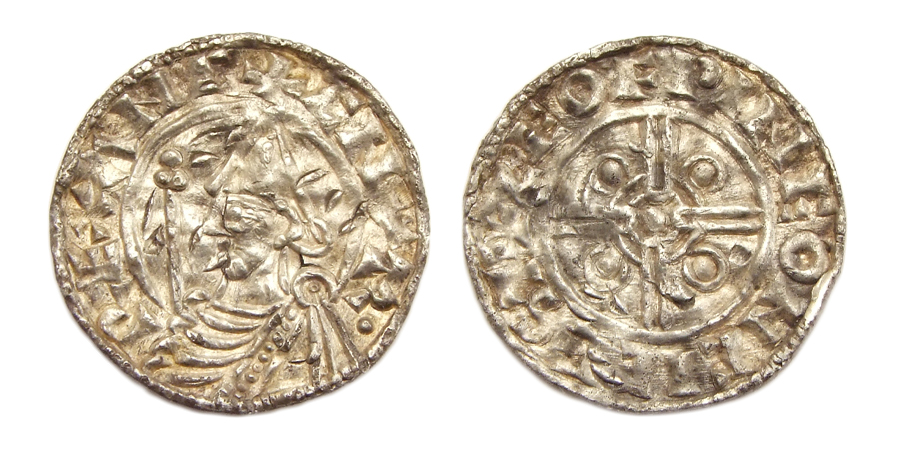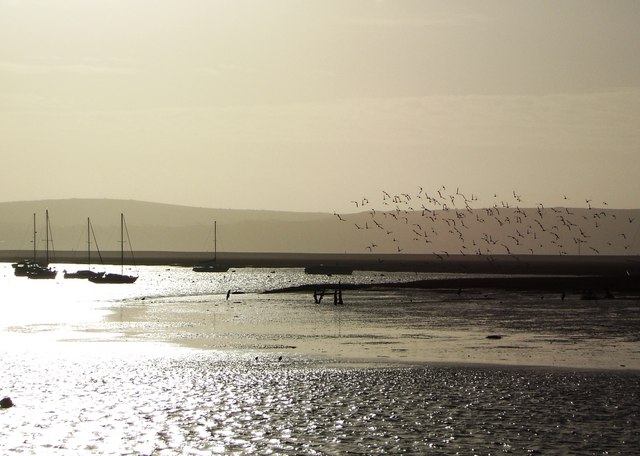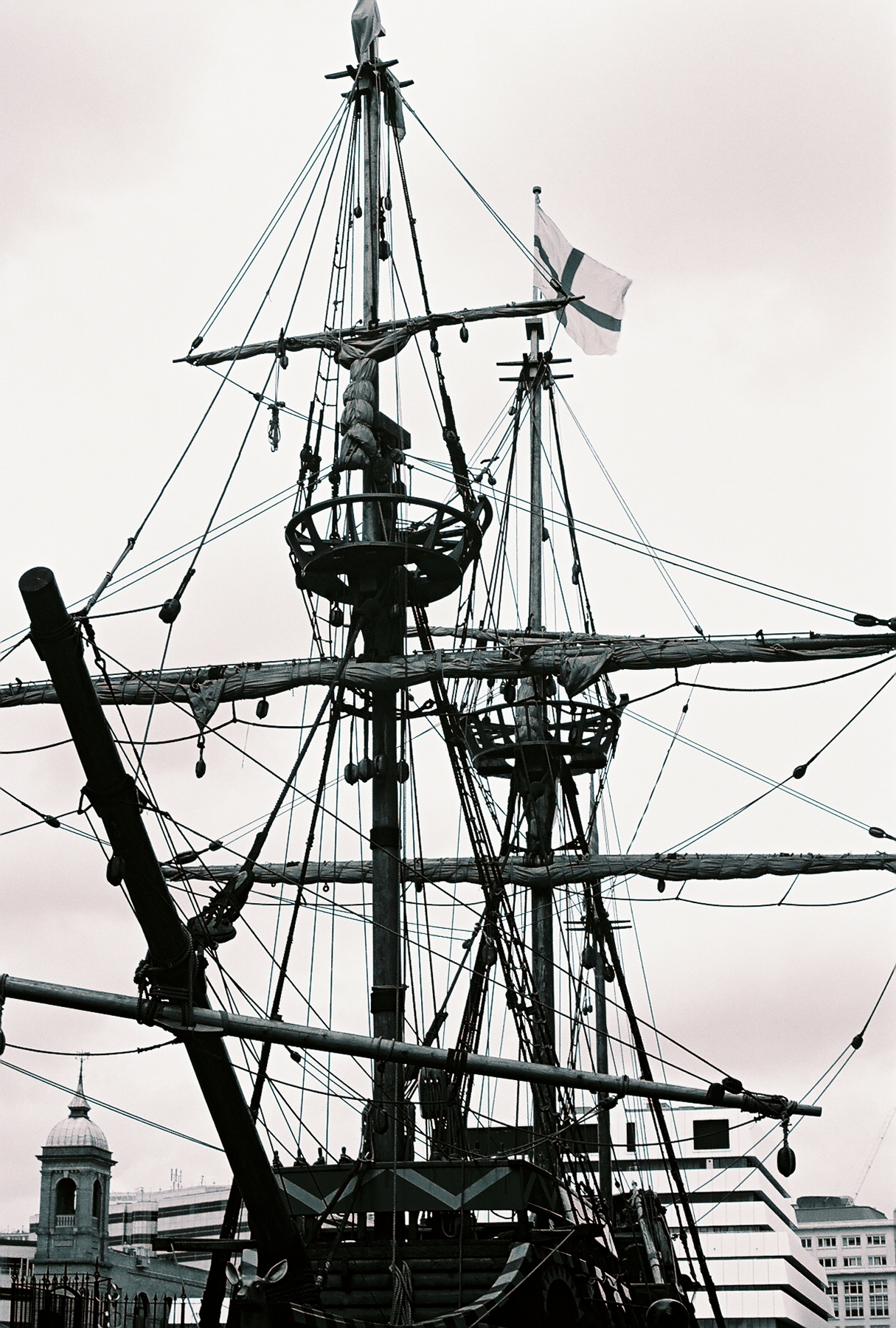|
Scows
A scow is a smaller type of barge. Some scows are rigged as sailboat, sailing scows. In the 19th and early 20th centuries, scows carried cargo in coastal waters and inland waterways, having an advantage for navigating shallow water or small harbours. Scows were in common use in the American Great Lakes and other parts of the U.S., Canada, southern England, and New Zealand. In modern times their main purpose is for recreation and racing; there are also garbage scows for aquatic transport of refuse. Scows The name "scow" derives from the Dutch . Old Saxon has a similar word which means to push from the shore, clearly related to punting. The basic scow was developed as a flat-bottomed barge ( a large Punt (boat), punt) capable of navigating shallow rivers and sitting comfortably on the bottom when the tide was out. By 1848 scows were being rigged for sailing using leeboards or sliding keels. They were also used as dumb barges towed by steamers. Dumb scows were used for a variety ... [...More Info...] [...Related Items...] OR: [Wikipedia] [Google] [Baidu] |
PD Racer
A Puddle Duck Racer or PD Racer is an 8 foot (2.44 m) long, 4 foot (1.22 m) wide, 16 inch (40 cm) high, spec series, racing sailboat. It is a one design hull shape with wide options in other areas. Billed as "the easiest sailboat in the world to build", the scow hull is a simple box, usually built of plywood. PD Racers have a Portsmouth yardstick, Portsmouth handicap rating of 140.0 and their US Sailing, USSA code is PDR.History of the PD Racer ''PDRacer.com''. Retrieved March 11, 2013. History and scope Designed by David "Shorty" Routh, the PD Racer design was first published and released in 2003, and the first hull was built in January 2004. With a focus on a simple design that uses low cost materials, PD Racers are intended to be accessible to a wide variety of people ...[...More Info...] [...Related Items...] OR: [Wikipedia] [Google] [Baidu] |
Lug Sail
The lug sail, or lugsail, is a fore-and-aft, four-cornered sail that is suspended from a spar, called a yard. When raised, the sail area overlaps the mast. For "standing lug" rigs, the sail may remain on the same side of the mast on both the port and starboard tacks. For "dipping lug" rigs, the sail is lowered partially or totally to be brought around to the leeward side of the mast in order to optimize the efficiency of the sail on both tacks. The lug sail is evolved from the square sail to improve how close the vessel can sail into the wind. Square sails, on the other hand, are symmetrically mounted in front of the mast and are manually angled to catch the wind on opposite tacks. Since it is difficult to orient square sails fore and aft or to tension their leading edges ( luffs), they are not as efficient upwind, compared with lug sails. The lug rig differs from the gaff rig, also fore-and-aft, whose sail is instead attached at the luff to the mast and is suspended from a spar ... [...More Info...] [...Related Items...] OR: [Wikipedia] [Google] [Baidu] |
Hull (watercraft)
A hull is the watertight body of a ship, boat, submarine, or flying boat. The hull may open at the top (such as a dinghy), or it may be fully or partially covered with a deck. Atop the deck may be a deckhouse and other superstructures, such as a funnel, derrick, or Mast (sailing), mast. The line where the hull meets the water surface is called the waterline. General features There is a wide variety of hull types that are chosen for suitability for different usages, the hull shape being dependent upon the needs of the design. Shapes range from a nearly perfect box, in the case of scow barges, to a needle-sharp surface of revolution in the case of a racing multihull sailboat. The shape is chosen to strike a balance between cost, hydrostatic considerations (accommodation, load carrying, and stability), hydrodynamics (speed, power requirements, and motion and behavior in a seaway) and special considerations for the ship's role, such as the rounded bow of an icebreaker or the flat bot ... [...More Info...] [...Related Items...] OR: [Wikipedia] [Google] [Baidu] |
Chichester
Chichester ( ) is a City status in the United Kingdom, cathedral city and civil parish in the Chichester District, Chichester district of West Sussex, England.OS Explorer map 120: Chichester, South Harting and Selsey Scale: 1:25 000. Publisher:Ordnance Survey – Southampton B2 edition. Publishing Date:2009. It is the only city in West Sussex and is its county town. It was a Ancient Rome, Roman and Anglo-Saxon settlement and a major market town from those times through Norman dynasty, Norman and medieval times to the present day. It is the seat of the Church of England Diocese of Chichester and is home to a 12th-century cathedral. The city has two main watercourses: the Chichester Canal and the River Lavant, West Sussex, River Lavant. The Lavant, a Winterbourne (stream), winterbourne, runs to the south of the city walls; it is hidden mostly in culverts when close to the city centre. History Roman period There is no recorded evidence that Chichester was a settlement of any ... [...More Info...] [...Related Items...] OR: [Wikipedia] [Google] [Baidu] |
West Wight Potter 15
The West Wight Potter 15 is an American trailerable sailboat that was designed by Stanley T. Smith and Herb Stewart as a cruiser and first built in 1979.Sherwood, Richard M.: ''A Field Guide to Sailboats of North America, Second Edition'', pages 52-53. Houghton Mifflin Company, 1994. Henkel, Steve: ''The Sailor's Book of Small Cruising Sailboats'', page 64. International Marine/McGraw-Hill, 2010. The West Wight Potter 15 is a development of the British West Wight Potter 14. Production The design has built since 1979 by International Marine of Inglewood, California, United States and remains in production. A total of 2600 boats have been completed. Design The original English design had a gunter rig and was built from plywood. Stewart used a plywood hull as a plug and created a mold for making fiberglass hulls at the same time the gunter rig was changed to a Marconi rig. The design uses a long sail batten to hold the leech out, giving an appearance similar to a gaff rig. ... [...More Info...] [...Related Items...] OR: [Wikipedia] [Google] [Baidu] |
Great Yarmouth
Great Yarmouth ( ), often called Yarmouth, is a seaside resort, seaside town which gives its name to the wider Borough of Great Yarmouth in Norfolk, England; it straddles the River Yare and is located east of Norwich. Its fishing industry, mainly for herring, shrank after the mid-20th century and has all but ended. North Sea oil from the 1960s supplied an oil rig industry that services offshore natural gas rigs; more recently, offshore wind power and other renewable energy industries have ensued. Yarmouth has been a resort since 1760 and a gateway from the Norfolk Broads to the North Sea. Holidaymaking rose when a railway opened in 1844, bringing easier, cheaper access and some new settlement. Wellington Pier opened in 1854 and Britannia Pier in 1858. Through the 20th century, Yarmouth boomed as a resort, with a promenade, pubs, trams, fish-and-chip shops, theatres, the Great Yarmouth Pleasure Beach, Pleasure Beach, the Sea Life Centres, Sea Life Centre, the Great Yarmouth Hi ... [...More Info...] [...Related Items...] OR: [Wikipedia] [Google] [Baidu] |
Keyhaven
Keyhaven is a hamlet on the south coast of England in the county of Hampshire. It is a fishing village, but the trade has been in decline for a period of years and its main draw now is tourism, especially sailing. Overview Keyhaven lies in the district of the New Forest and is just within the borders of the New Forest National Park. It is in the civil parish of Milford-on-Sea, and it lies at one end of the shingle bank known as Hurst Spit which leads to Hurst Castle. Keyhaven draws visitors through its outstanding natural beauty, from the views over the Solent to the abundance of open farm land. To the east of Keyhaven lies the nature reserve of Keyhaven marshes. History The name "Keyhaven" means ‘Harbour where cows are shipped’; OE ''cū'' (genitive ''cȳ'') + ''hæfen''. Cattle and sheep were transported from the Isle of Wight to the water meadows of the Avon around Christchurch. Keyhaven was a port as early as 1206. There seem to have been two manorial estates he ... [...More Info...] [...Related Items...] OR: [Wikipedia] [Google] [Baidu] |
Lymington
Lymington is a port town on the west bank of the Lymington River on the Solent, in the New Forest (district), New Forest district of Hampshire, England. The town faces Yarmouth, Isle of Wight, to which there is a Roll-on/roll-off, car ferry service operated by Wightlink. It is within the civil parish of Lymington and Pennington. The town has a large tourist industry, based on proximity to the New Forest and its harbour. It is a major yachting centre with three marinas. As of 2015, the parish of Lymington and Pennington had a population of 15,726. History The earliest settlement in the Lymington area was around the Iron Age hill fort known today as Buckland Rings. The hill and ditches of the fort survive, and archaeological excavation of part of the walls was carried out in 1935. The fort has been dated to around the 6th century BC. There is another supposed Iron Age site at nearby Buckland Rings#Ampress Camp, Ampress Hole. However, evidence of later settlement there (as opp ... [...More Info...] [...Related Items...] OR: [Wikipedia] [Google] [Baidu] |
Solent
The Solent ( ) is a strait between the Isle of Wight and mainland Great Britain; the major historic ports of Southampton and Portsmouth lie inland of its shores. It is about long and varies in width between , although the Hurst Spit which projects into the Solent narrows the sea crossing between Hurst Castle and Colwell Bay to just over . The Solent is a major shipping lane for passenger, freight and military vessels. It is also an important recreational area for water sports, particularly yachting, hosting the Cowes Week sailing event annually. It is sheltered by the Isle of Wight and has a complex tidal pattern, which has benefited Southampton's success as a port, providing a "double high tide" that extends the tidal window during which deep-draught ships can be handled. Spithead, an area off Gilkicker Point near Gosport, is known as the place where the Royal Navy is traditionally reviewed by the monarch of the day. The area is of great ecological and landscap ... [...More Info...] [...Related Items...] OR: [Wikipedia] [Google] [Baidu] |
Rigging
Rigging comprises the system of ropes, cables and chains, which support and control a sailing ship or sail boat's masts and sails. ''Standing rigging'' is the fixed rigging that supports masts including shrouds and stays. ''Running rigging'' is rigging which adjusts the position of the vessel's sails and spars including halyards, braces, sheets and vangs. Etymology According to the Encyclopædia Britannica Eleventh Edition "rigging" derives from Anglo-Saxon ''wrigan'' or ''wringing'', "to clothe". The same source points out that "rigging" a sailing vessel refers to putting all the components in place to allow it to function, including the masts, spars, sails and the rigging. History Theophrastus in his '' History of Plants'' ( 300 BCE) states that the rigging on King Antigonus' fleet was made from papyrus reed. Types of rigging Rigging is divided into two classes, ''standing'', which supports the mast (and bowsprit), and ''running'', which controls the orienta ... [...More Info...] [...Related Items...] OR: [Wikipedia] [Google] [Baidu] |
Schooner
A schooner ( ) is a type of sailing ship, sailing vessel defined by its Rig (sailing), rig: fore-and-aft rigged on all of two or more Mast (sailing), masts and, in the case of a two-masted schooner, the foremast generally being shorter than the mainmast. A common variant, the topsail schooner also has a square topsail on the foremast, to which may be added a Topgallant sail, topgallant. Differing definitions leave uncertain whether the addition of a Course (sail), fore course would make such a vessel a brigantine. Many schooners are Gaff rig, gaff-rigged, but other examples include Bermuda rig and the staysail schooner. Etymology The term "schooner" first appeared in eastern North America in the early 1700s. The term may be related to a Scots language, Scots word meaning to skip over water, or to skip stones. History The exact origins of schooner rigged vessels are obscure, but by early 17th century they appear in paintings by Dutch marine artists. The earliest known il ... [...More Info...] [...Related Items...] OR: [Wikipedia] [Google] [Baidu] |









